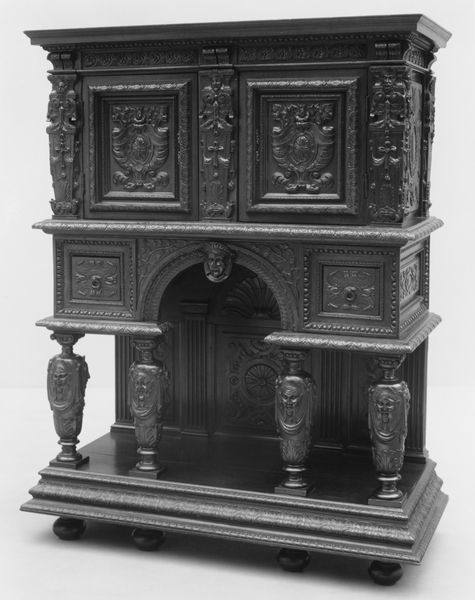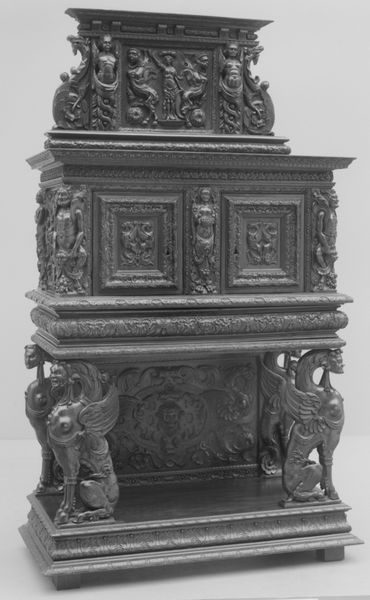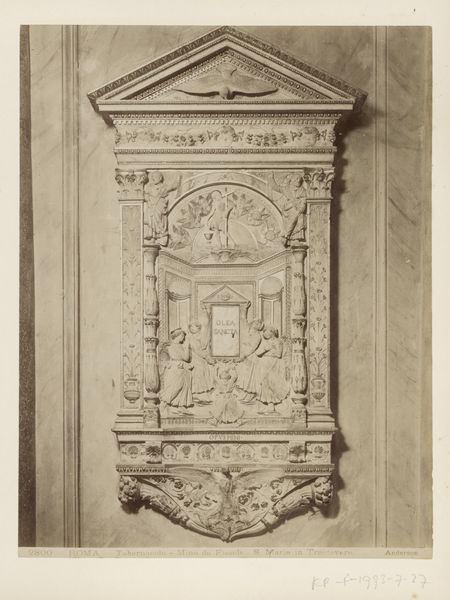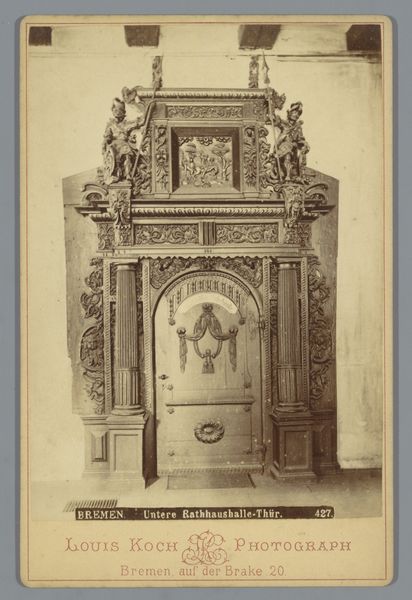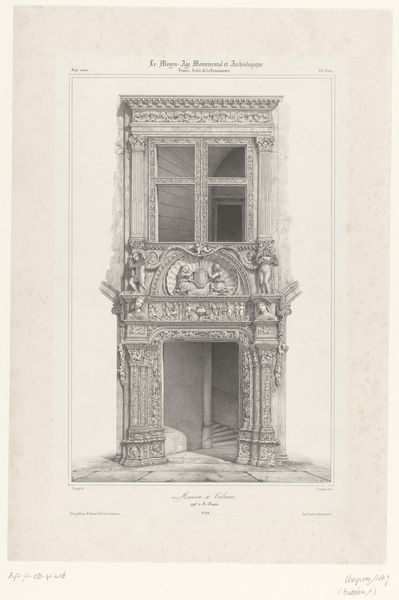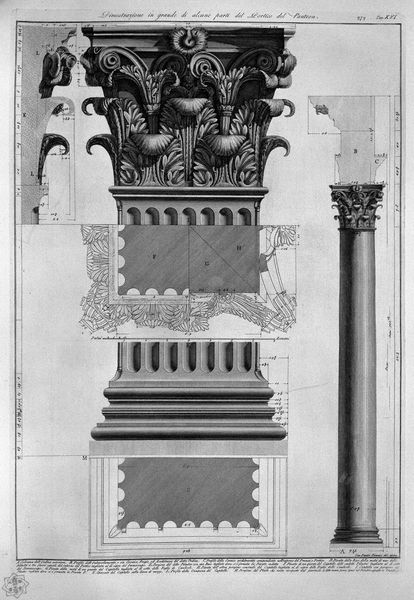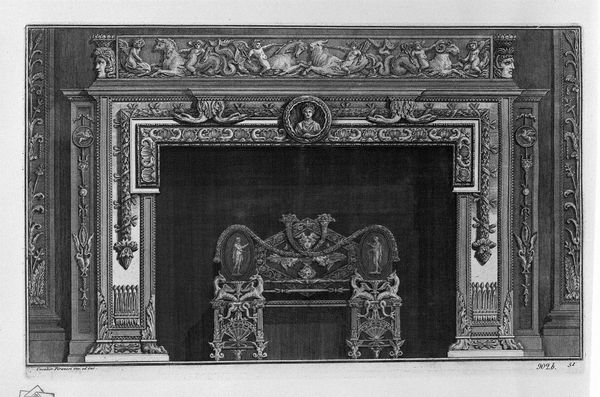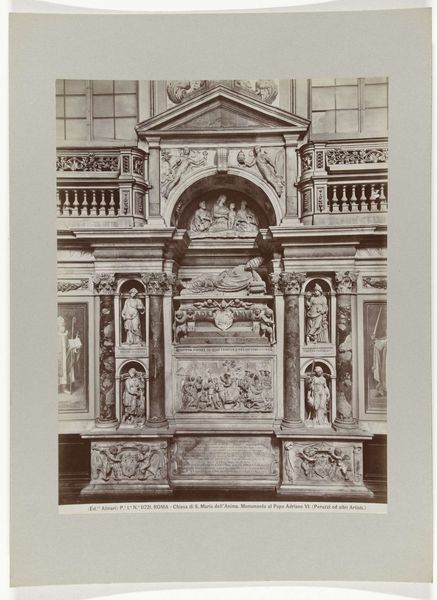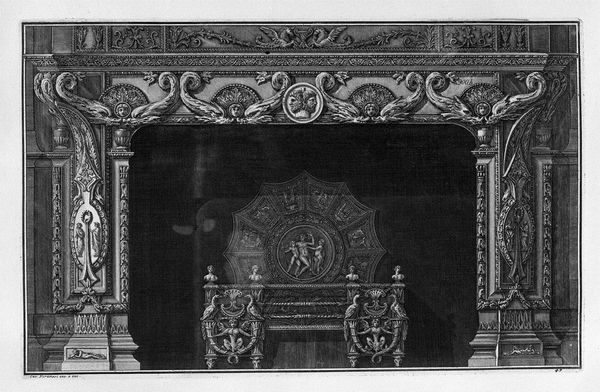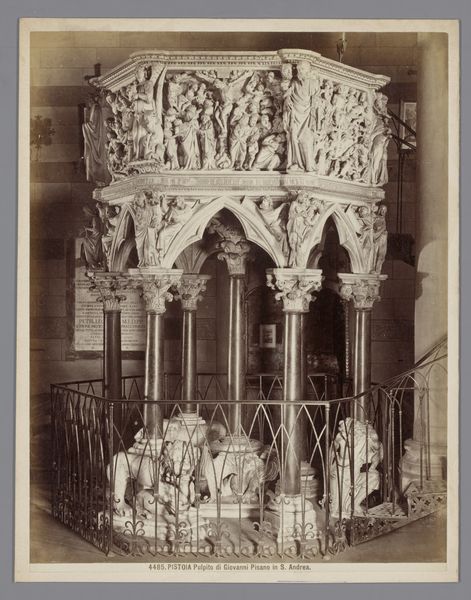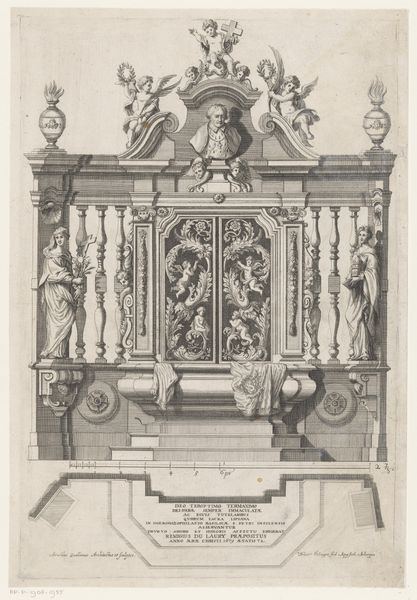
carving, sculpture, wood
#
carving
#
furniture
#
sculpture
#
architectural drawing
#
wood
#
decorative-art
Dimensions: Overall (confirmed): H. 94 1/4 x W. 50 3/8 x D. 20 3/8 in. (239.4 x 128 x 51.8 cm); Overall (body only, confirmed): H. 59 1/4 x W. 50 3/8 x D. 20 3/8 in. (150.5 x 128 x 51.8 cm)
Copyright: Public Domain
This cabinet was made by Jacques Androuet Du Cerceau sometime in the 16th century. Notice the cabinet's commanding presence, primarily achieved through its impressive height and detailed carvings. The structure is heavily influenced by classical architecture, with columns and pediments creating a sense of order and balance, yet it is also richly ornamented. The artist used architectural elements to create a visual hierarchy, with the most elaborate carvings placed at the top, drawing the viewer's eye upward. This ornamental density destabilizes the clean lines of classical architecture, offering a more decorative and less functional aesthetic. Du Cerceau employs a semiotic system where architectural forms serve as signs of status and knowledge. The cabinet thus becomes more than a piece of furniture, functioning as a display of cultural capital. By challenging the austerity of classical design with excessive ornamentation, the cabinet exists within a larger discourse about the display of wealth and the value of artifice. Look at the interplay between form and decoration. This tension is not merely aesthetic, but reflects a deeper cultural dialogue about how objects communicate meaning and status.
Comments
No comments
Be the first to comment and join the conversation on the ultimate creative platform.
